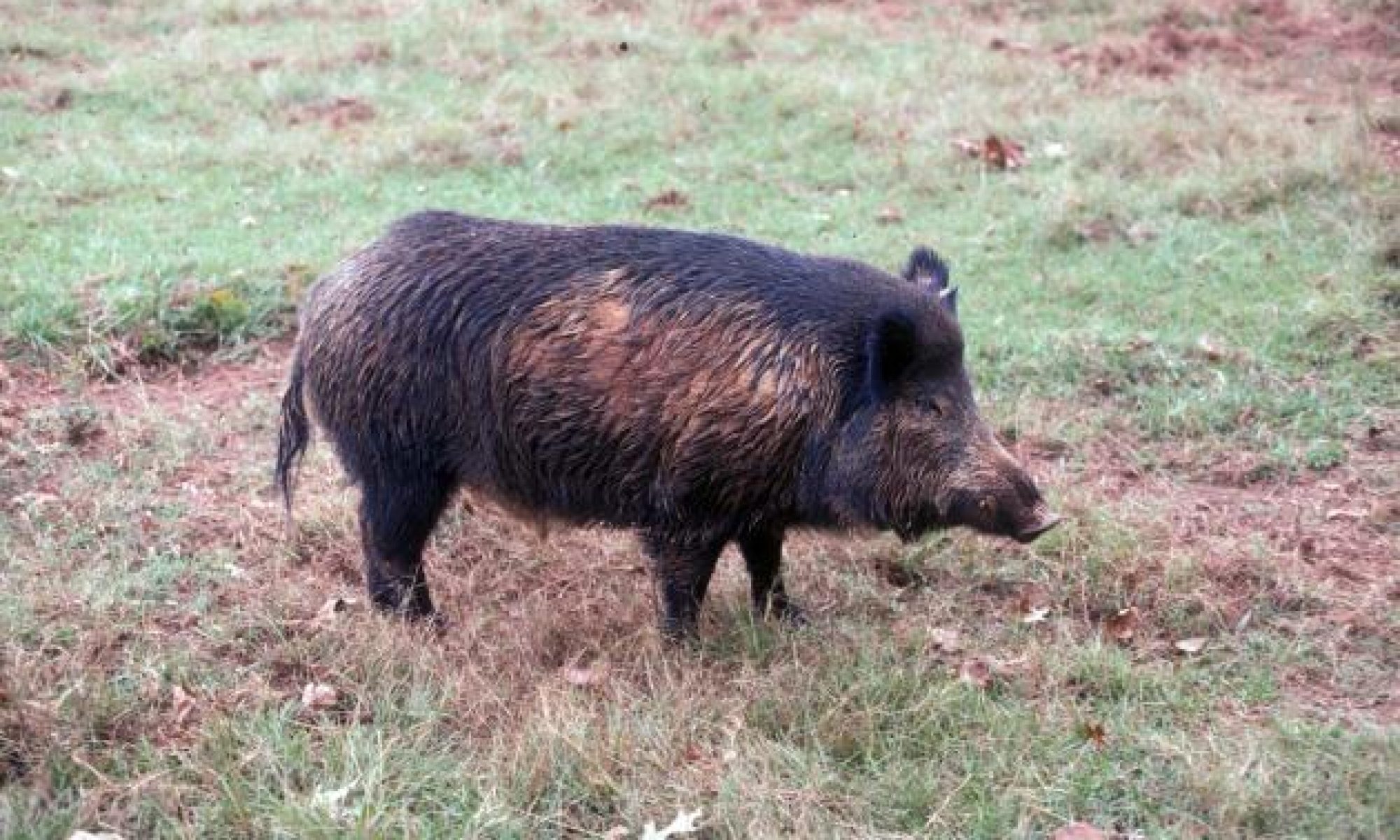There are two primary ways to control the local number of feral hogs:
- lethal removal, which includes the methods of trapping, snaring, shooting, and chasing with dogs, and
- exclusion, or fencing.
No single method represents a guaranteed stand-alone option for successfully controlling feral hogs; however, a combination of methods can be used to manage local feral hog numbers and damage over time.
At the core of any successful campaign is designing a strategy which takes into account the particular circumstances and limitations of your situation.
- Legal restrictions may prevent shooting or baiting.
- Feral hogs which are naive to human interactions are easier to trap, snare, or shoot than those which have been chased or missed a bullet.
- When agriculture crops are available and in season, it can be difficult to entice feral hogs into a trap.
Feral hogs are very adaptive. They quickly become “educated” and learn to avoid threatening situations. Successful trappers have a strategy in mind and patience before activating the trigger, whether it be a trap or firearm. In many cases, the goal is 100% removal of all feral hogs in the vicinity to provide “temporary” relief from damage, before the next feral hogs appear. 100% removal is an appropriate goal as even one sow can re-populate her home range in less than a year.
According to Hamrick et al (2011), most nonlethal methods such as habitat manipulation, frightening devices, and guard animals, are ineffective at preventing feral hog problems.
Most wildlife professionals use shooting and trapping to control feral hog populations. According to Hamrick et all, (2011), some of the most efficient methods of lethal control include aerial shooting and live trapping followed by euthanasia. (Note that aerial shooting may be prohibited or require government permits.)
Hunting, shooting at night, and hunting with dogs are rarely effective at removing enough large numbers of feral hogs to control their population; though it can be effective for controlling small groups or individual nuisance hogs.
The use of toxicants to control feral hogs has not been permitted yet by state governments as of this publication, though the EPA has approved one type of bait which uses warfarin as its active ingredient. Poisoning of non-target species is of major concern.
